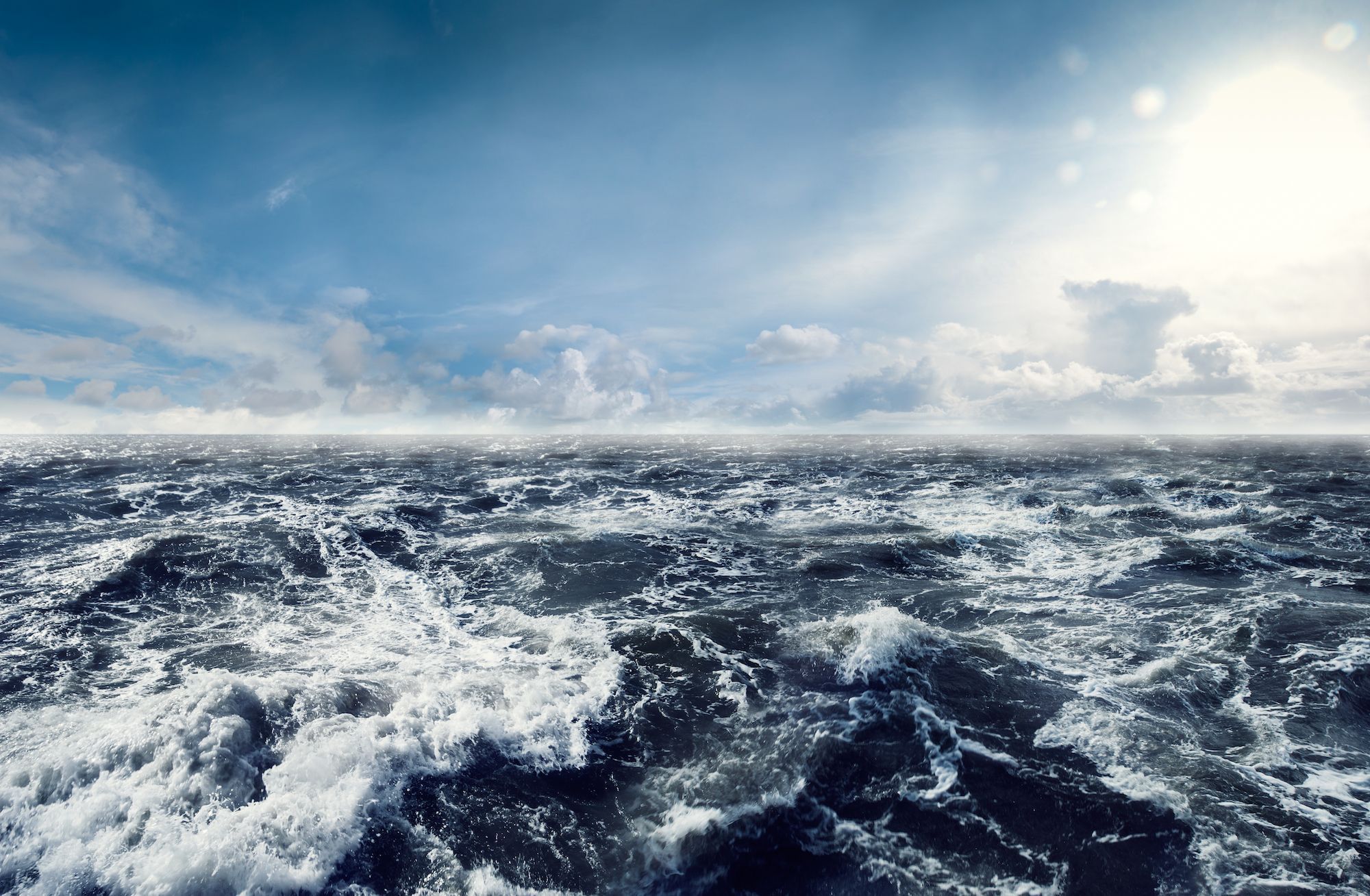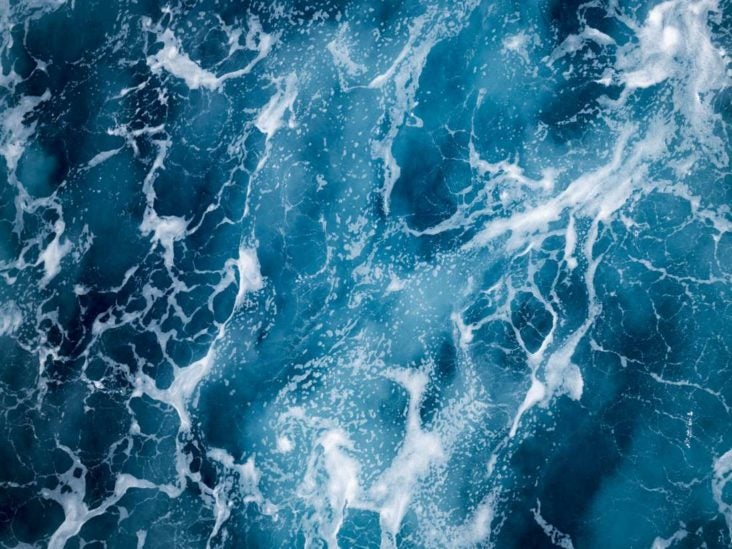Ocean
The ocean is a continuous body of salt water that covers more than 70 percent of the Earth's surface. Ocean currents govern the world's weather and churn a kaleidoscope of life. Humans depend on. The ocean is a massive body of saline water that covers approximately 72% of the Earth's surface. According to NOAA, there is only one Global Ocean.However, this ocean has been divided into distinct named geographic regions by countries and oceanographers.
Our editors will review what you’ve submitted and determine whether to revise the article.
Join Britannica's Publishing Partner Program and our community of experts to gain a global audience for your work!Oceania Cruises
Ocean, continuous body of salt water that is contained in enormous basins on Earth’s surface.
When viewed from space, the predominance of Earth’s oceans is readily apparent. The oceans and their marginal seas cover nearly 71 percent of Earth’s surface, with an average depth of 3,688 metres (12,100 feet). The exposed land occupies the remaining 29 percent of the planetary surface and has a mean elevation of about 840 metres (approximately 2,755 feet). Actually, all the elevated land could be hidden under the oceans and Earth reduced to a smooth sphere that would be completely covered by a continuous layer of seawater more than 2,600 metres (8,530 feet) deep. This is known as the sphere depth of the oceans and serves to underscore the abundance of water on Earth’s surface.
Earth is unique in the solar system because of its distance from the Sun and its period of rotation. These combine to subject Earth to a solar radiation level that maintains the planet at a mean surface temperature of about 14–15 °C (57.2–59 °F). Mean surface temperature varies little over annual and night-day cycles. This mean temperature allows water to exist on Earth in all three of its phases—solid, liquid, and gaseous. No other planet in the solar system has this feature. The liquid phase predominates on Earth. By volume, 97.957 percent of the water on the planet exists as oceanic water and associated sea ice. The gaseous phase and droplet water in the atmosphereconstitute 0.001 percent. Fresh water in lakes and streams makes up 0.036 percent, while groundwater is 10 times more abundant at 0.365 percent. Glaciers and ice caps constitute 1.641 percent of Earth’s total water volume.
Each of the above is considered to be a reservoir of water. Water continuously circulates between these reservoirs in what is called the hydrologic cycle, which is driven by energy from the Sun. Evaporation, precipitation, movement of the atmosphere, and the downhill flow of river water, glaciers, and groundwater keep water in motion between the reservoirs and maintain the hydrologic cycle.
The large range of volumes in these reservoirs and the rates at which water cycles between them combine to create important conditions on Earth. If small changes occur in the rate at which water is cycled into or out of a reservoir, the volume of a reservoir changes. These volume changes may be relatively large and rapid in a small reservoir or small and slow in a large reservoir. A small percentage change in the volume of the oceans may produce a large proportional change in the land-ice reservoir, thereby promoting glacial and interglacial stages. The rate at which water enters or leaves a reservoir divided into the reservoir volume determines the residence time of water in the reservoir. The residence time of water in a reservoir, in turn, governs many of the properties of that reservoir.
This article provides an overview of the world’s oceanic reservoir, including its major subdivisions and its origins. For a full description of the water in the oceans, seeseawater. For information on the forces that move water through the ocean, seeocean current. For a description of the different kinds of waves that traverse the ocean, seewave. See alsomarine ecosystem for coverage of the life-forms that populate the marine environment.
Relative distribution of the oceans
Earth possesses one “world ocean.” However, those conducting oceanic research generally recognize the existence of five major oceans: the Pacific, Atlantic, Indian, Arctic, and Southern oceans. Arbitrary boundaries separate these bodies of water. The boundaries of each ocean are largely defined by the continents that frame them. In the Southern Hemisphere the southern portions of the Pacific, Atlantic, and Indian oceans and their tributary seas that surround Antarctica are often referred to as the Southern Ocean. Many subdivisions can be made to distinguish the limits of seas and gulfs that have historical, political, and sometimes ecological significance. However, water properties, ocean currents, and biological populations are not constrained by these boundaries. Indeed, many researchers do not recognize them either.
If area-volume analyses of the oceans are to be made, then boundaries must be established to separate individual regions. In 1921 Erwin Kossina, a German geographer, published tables giving the distribution of oceanic water with depth for the oceans and adjacent seas. This work was updated in 1966 by American geologist H.W. Menard and American oceanographer S.M. Smith. The latter only slightly changed the numbers derived by Kossina. This was remarkable, since the original effort relied entirely on the sparse depth measurements accumulated by individual wire soundings, while the more recent work had the benefit of acoustic depth soundings collected since the 1920s. This type of analysis, called hypsometry, allows quantification of the surface area distribution of the oceans and their marginal seas with depth.
The distribution of oceanic surface area with 5° increments of latitude shows that the distribution of land and water on Earth’s surface is markedly different in the Northern and Southern hemispheres. The Southern Hemisphere may be called the water hemisphere, while the Northern Hemisphere is the land hemisphere. This is especially true in the temperate latitudes.
This asymmetry of land and water distribution between the Northern and Southern hemispheres makes the two hemispheres behave very differently in response to the annual variation in solar radiation received by Earth. The Southern Hemisphere shows only a small change in surface temperature from summer to winter at temperate latitudes. This variation is controlled primarily by the ocean’s response to seasonal changes in heating and cooling. The Northern Hemisphere has one change in surface temperature controlled by its oceanic area and another controlled by its land area. In the temperate latitudes of the Northern Hemisphere, the land is much warmer than the oceanic area in summer and much colder in winter. This situation creates large-scale seasonal changes in atmospheric circulation and climate in the Northern Hemisphere that are not found in the Southern Hemisphere.
- key people
- related topics
The ocean covers more than 70% of the Earth’s total surface and contains roughly 97% of all its water. Measuring about 361.9 million square kilometers, it is a massive continuous body of salt water, so large in fact that oceanographers estimate that less than 20% has been explored. While there is one global ocean, it is generally divided up into five major basins: the Pacific, the Atlantic, the Indian, the Southern, and the Arctic.
With an average depth of 3,700 meters, experts have also divided the world ocean into various zones based on depth from the surface for ease of oceanographic studies. The ocean is divided into zones depending on how far light reaches:
- Deep Ocean (which is often divided into 3 layers: Midnight zone, the Abyss and the Trenches)
Ocean Sunlight Zone

Aptly named for its position at the surface level, this sunlight zone, also called the surface zone or epipelagic zone, extends downward 200 meters or roughly 5% of the ocean’s average depth. At midday, it is practically fully lit by the sun, hence called the sunlight zone. It is also regarded as the warmest layer. An abundance of natural light also generates heat, which penetrates deeper waters due to the movement of the wind. Depending on location, the temperature of the epipelagic zone can go as high as 97 degrees Fahrenheit or drop as far 28 degrees.Enough sunlight penetrates this layer for algae to utilize photosynthesis, which in turn creates roughly 50% of the oxygen in our atmosphere. The surface zone is where the majority of commercial fishing takes place and is home to many kinds of animals, including whales, dolphins, and sharks, many of whom frequently break the ocean’s surface.
Ocean Twilight Zone
The twilight zone or the mesopelagic zone begins at 200 meters and extends downward to 1,000 meters, making up approximately 20% percent of the ocean’s total depth. It is generally a very dim region, but it does receive a sliver of sunlight at the midday point which is enough for photosynthesis to occur. The twilight zone actually plays a large role in regulating our planet; the ocean absorbs roughly 25% of the carbon dioxide humans emit and pushes it down to the deep ocean, preventing it from rereleasing into the atmosphere. Unlike the surface zone, this second layer has remained relatively untouched from commercial fishing despite the fact that it is bursting with aquatic life. The mesopelagic zone is also where experts have first noted the existence of bioluminescent creatures. Temperature changes here are the most extreme. This is in part due to the thermocline, a transitional region where warmer water decreases rapidly.
Ocean State Job Lot
The Deep Ocean
The deep ocean—the third and final layer—extends from the 1,000 meter point to the ocean floor, regardless of how deep that is. At minimum, it makes up 75% of the ocean’s depth. It is a frigid region that receives absolutely no natural light. The organisms that live in this zone are bioluminescent; that is to say they produce and emit their own light. Examples of these creatures include certain types of plankton, jellyfish, squid, and the nightmarish barbeled dragonfish. Living in complete darkness, they have light-sensitive eyes that allow them to sense each other’s presence. The deep ocean is further divided into 3 zones: Midnight zone, the Abyss and the Trenches Asio for mac.
Maps Of The Oceans
Ocean Midnight Zone
The midnight zone is also known as the bathypelagic zone makes up the first third of the deep ocean in the three layers model. It extends downward from 1,000 meters to 4,000—roughly the average depth of the global ocean. The temperature rarely changes, remaining at a fairly consistent 39 degrees Fahrenheit. As mentioned earlier, the only light in this regions does not come from the sun, but from bioluminescent animals who use their ability to hunt or find a mate. Some go for days living in complete darkness. However, there are a few sea creatures who swim this far down to feed, such as sperm whales. In fact, being fifteen times the size of the epipelagic zone, the bathypelagic is generally regarded as the world’s largest ecosystem.
The Abyss

Ocean State Job Lot

The abyss (abyssopelagic zone) is the middle layer of the deep ocean. Its name comes from the Greek word abyss which means “no bottom.” True to its name, there was a time when the ancients believed that the ocean was a bottomless void. It extends from 4,000 meters down to 6,000, which for some global regions marks the seafloor. The water temperature never rises above near freezing. There is a startling lack of life in the abyssopelagic zone; only a select few creatures can survive the immense pressure, such as invertebrates.
The Trenches
The trenches (hadalpelagic zone) is the deepest part of the ocean. It extends past the abyssopelagic zone in parts of the world where that is physically possible; this is usually in the form of deep sea trenches and canyons. An example of such a marvel is the Mariana Trench in the Pacific Ocean, which marks the deepest location on Earth at 11,034 meters, a depth so deep that Mount Everest would be completely submerged if placed at the bottom. The pressure is so intense that it equates to the approximate weight of 48 Boeing 747 jets. Even so, life does exist in this zone. The abyssobrotula galatheae—a species of eel—was discovered at 8,372 meters in the Puerto Rico Trench in 1970.
Providing Better Insight
Ocean Lyrics Hillsong
The ocean is a vast expanse of water that covers more of the Earth’s surface than land. Regardless, expert oceanographers have managed to divide it up into various layers. While there is crossover between the three and five layers concepts, particularly within the first two layers, this article has examined the unique characteristics of each zone. The ocean remains one of the most mysterious places on our tiny blue planet, but breakdowns such as this help provide better insight into its awe-inspiring wonder. Remote access for mac microsoft.
